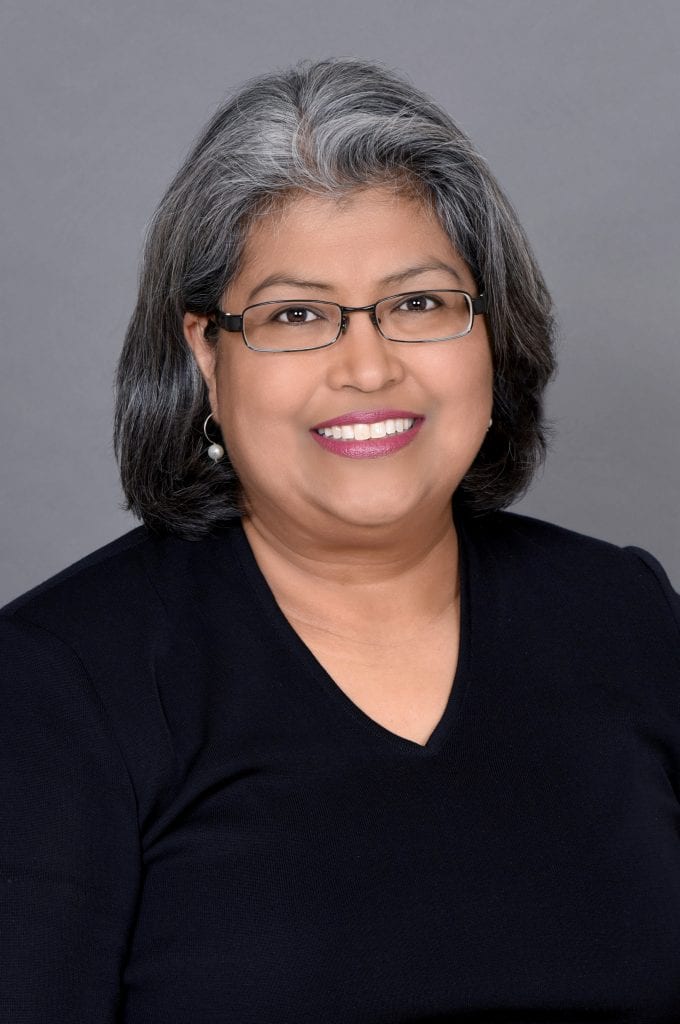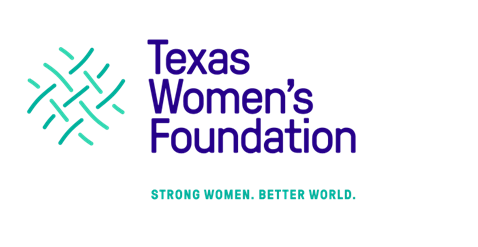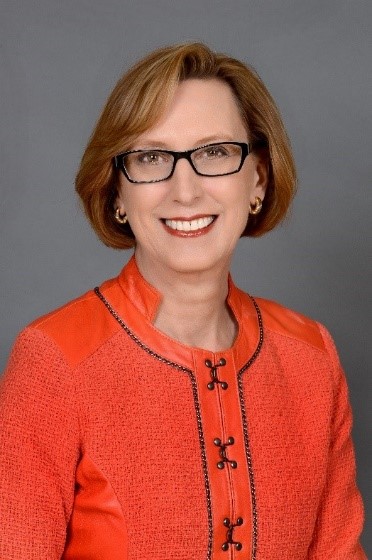Via: Philanthropy Women
By: Keirsten Mareck
Here in the Northeast, we don’t tend to envision Texas as having a culture of diversity and women’s empowerment. But Texas is actually one of the most diverse states in the union. Currently, 68% of women ages 15 to 24 are women of color. The reality for the biggest state in the union is that the minority is the majority among young people. Texas is also home to one of the country’s largest women’s foundations, the Texas Women’s Foundation (TWF). Previously known as the Dallas Women’s Foundation, in 2018, it rebranded as a statewide endeavor with plans to increase its impact across all regions of the Lone Star State.
The Foundation’s President and CEO, Roslyn Dawson Thompson, recently hopped on the phone with Philanthropy Women, along with her colleagues Mary Valadez, Associate Vice President of Grants, and Lisa de la Garza, Vice President of Programs, to talk about how Texas Women’s Foundation advances its mission to improve gender equality in the state, and how it will carry out its expansion. We particularly wanted to hear about their participatory grantmaking practices, and how they weave diversity and systems change into their work.
“About three months into my tenure [as CEO and President in 2011] we applied for the trademark of the name Texas Women’s Foundation,” says Dawson Thompson. At that point, she already knew that the foundation would eventually need to take its mission statewide. With its strategic plan in 2012, the foundation did more extensive statewide research, and decided to focus on women’s economic security and women’s leadership as primary ways to address gender gaps in all sectors of society.
“It was our statewide research that led us to those focus areas,” says Dawson Thompson. Research statistics like the fact that 30% of households in Texas are headed by women, but 54% of households in poverty are headed by women, mostly women of color, drove the foundation toward its focus on economic empowerment.
With this strong and intentional focus on women’s economic security, the foundation began to apply its new strategy, and also did more research in Austin, Tyler, McAllen, San Antonio, Houston, Amarillo, Fort Worth and El Paso.
“We went door to door convening with partners to get everyone on the same page about what it means to be a woman in Texas.”
At that time, the foundation still kept its name — Dallas Women’s Foundation — but published the studies under Texas Women’s Foundation, “preparing for the eventuality of becoming Texas Women’s Foundation.”
With disseminating that research and getting into the communities, Dawson Thompson says the foundation “gained a remarkably solid groups of supporters and colleagues around the state.” It gave these partners — corporate and small business, nonprofit, community-based leaders and constituents — a place to have statewide conversations and statewide common understanding of the issues for women and ways that they could collectively respond to them.
What the foundation learned, says Dawson Thompson, is that the community in Texas already recognizes the need for more women in leadership, and better economic stability for women, and is ready to take on the challenges.
“When we flipped the switch to become the Texas Women’s Foundation, we did more research, establishing women’s economic security as a priority, and people already understood that as a problem.” This is important — since identifying community support for a movement before it starts is a valuable way to build participation down the road.
What is TWF’s Secret Sauce for Driving Women’s Leadership and Diversity of Leadership?
Mary Valadez, Associate Vice President of Grants, jumped into the conversation to provide her observations on the foundation’s program work. “We have a significant number of women of color in Texas, and that’s the leadership pipeline. How can we develop that pipeline, and also allow these young women of color to identify what issues are impacting their lives?”

Valadez described the Young Women’s Advisory Council (YWAC), which the foundation uses to steer its work. “We are working with 22 young women of color on an advisory council,” says Valadez. “When we conducted listening sessions throughout the community, we heard from over 200 young women about their concerns and issues were. They identified 5 focus areas: mental health, education, sexuality, representation and identity.”
For Valadez, these focus areas were somewhat of a surprise in terms of how broad they were. “They are looking at a bigger picture than we allow ourselves to look at. What they did last year was take those issue areas and make recommendations. With $25,000 to make in grants to the community, they identified who they wanted to talk to about a possibility of a grant. Valadez provided oversight and support as the young women vetted the potential grantees with visits and phone interviews. “They struggled just like we do with, who gets funded, who doesn’t get funded,” says Valadez.
One of the grants made by the YWAC was to the Parkland Foundation, which is the philanthropic arm of a local county hospital in Texas.
“Their grant was to create a document that would address menstrual hygiene and the use of tampons and all of the cultural myths that exist around that,” says Valadez. “It was an opportunity to provide information to the community in a sensitive, multi-lingual way. YWAC helped to guide the strategy for how to reach the target population for this information.”
For Valadez, this is a striking case example of participatory grantmaking. As well, she says, “the process allows these smart young women to take off and use that leadership ability that they have,” making for a process that is a transformative experience on many different levels.
In the coming year, Valadez also hopes to have TWF making micro-grants to individuals. “There are women out there that, with just $1,000 or $2,000, their projects could really take off.”
How Texas Women’s Foundation Advances its Agenda for Systems Change
From her perspective as CEO of the foundation, Dawson Thompson says, “We’ve grown up a lot in our board’s ability to support more active advocacy. In 2017, we defined specific focus areas for advocacy: access to childcare, greater housing assistance, and greater health care access, and we became more nimble at being able to respond to legislative issues.”
By the time 2019 came, TWF had a full legislative agenda and list of issues they were prepared to testify about, as well as activate others to testify. Dawson Thompson says they created an “Army of Advocates” around the state so that they could be brought in to address a particular issue. “We will continue building that, and even in the off [legislative] year, there’s a lot of work that’s getting done.”
Attention to Giving Circles
Before introducing Lisa de la Garza to talk about giving circles, Dawson Thompson interjected to say that, “Some of the women’s foundations have eschewed involvement with women’s giving circles. At the same time, there’s this enormous five-year national movement particularly led by people of color around creating and sustaining giving circles. So we felt it was super important for us to be supportive. We think that’s another important strategy.”

TWF hosts four women’s giving circles: Orchid Giving Circle, focused on the North Asian Texas Community; Village Giving Circle, focused on the African American community; HERitage Giving Fund, focused on African American girls in North Texas; and, starting this year, a new Hispanic H100 Latina Giving Circle.
“It’s exciting to have women with their own ideas of what they want to do and how they want to give,” says de la Garza. “It’s great to support them through that process.”
The amounts being given by these circles are not insubstantial. In 2018, they collectively granted $255,000, and this year, with the addition of the H100, they expect to do big things. “Some of them are committed to granting every application they get. They have their own process and they’re out there making it happen,” adds de la Garza.
“Organizations Are As They Begin”
“In 1985, our founders were 19 women who came together, and they were incredibly diverse,” Dawson Thompson says. She described the exciting time in 1985 when the founders came together, bringing different political beliefs, sexual orientations, ethnicities and cultures.
“We had former U.S. Senator Kay Bailey Hutchison (a well-known conservative), and at the same time we had Harryette Ehrhardt, a congresswoman who was one of the most radical democrats.” Yet, says Dawson Thompson, all of these very different women agreed that there was a fundamental problem with the lack of funding out there for women and girls.
Dawson Thompson painted this picture of diversity to help show how important founding principles can be to an organization’s growth. She noted a recent conference where TWF was held up as a model of the theory that “Organizations are as they begin.”
Indeed, a strong foundation of values is what makes many women’s funds powerful vehicles of social change. “The diversity of founders and the ongoing commitment, not just on paper, and not just giving to women and girls of color philanthropically, but having diverse women in leadership roles on our board and staff — these were the early hallmarks of the organization at the beginning.”

